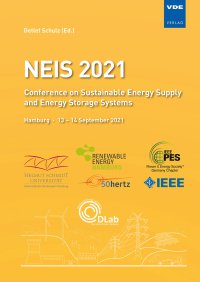Influence of Input Parameters on Artificial Neural Networks for Off-Grid Solar Photovoltaic Power Forecasting
Conference: NEIS 2021 - Conference on Sustainable Energy Supply and Energy Storage Systems
09/13/2021 - 09/14/2021 at Hamburg, Deutschland
Proceedings: NEIS 2021
Pages: 7Language: englishTyp: PDF
Authors:
Bugaje, Aminu; Yadav, Akhilesh; Mehta, Kedar; Ojinji, Felicia; Ehrenwirth, Mathias; Trinkl, Christoph; Zoerner, Wilfried (University of Technology Ingolstadt, Ingolstadt, Germany)
Abstract:
ANN models have proven to be robust enough to encapsulate variations in the input-output relationship of weather parameters and photovoltaic (PV) output power, making it one of the most effective and applied statistical machine learning techniques in solar power forecasting. This article presents the development of a Feed-Forward Multi-Layer Perceptron (MLP) ANN model for PV power forecasting by utilizing MATLABïs Deep Learning Toolbox. The ANN model was used to predict the power output of an off-grid solar system. To achieve the goal of the study, different ANN model scenarios were developed by changing the number of input features, i.e. 6-30-1 and 3-30-1 respectively. The ANN accuracy was compared based on the mean squared error (MSE), correlation coefficient (R), and mean absolute error (MAE) functions. Furthermore, the presented study also carried out a sensitivity analysis on the input features to assess the impact of individual input on output (power forecasting) results. It was found that the ANN model with six input features (6-30-1) had better accuracy. However, the ANN model with three input features (3-30-1) still provides a significant amount of accuracy. In order to check the reliability and generalized performance of the proposed model, it was further tested with different location?s weather data such as Nairobi and Mombasa.


